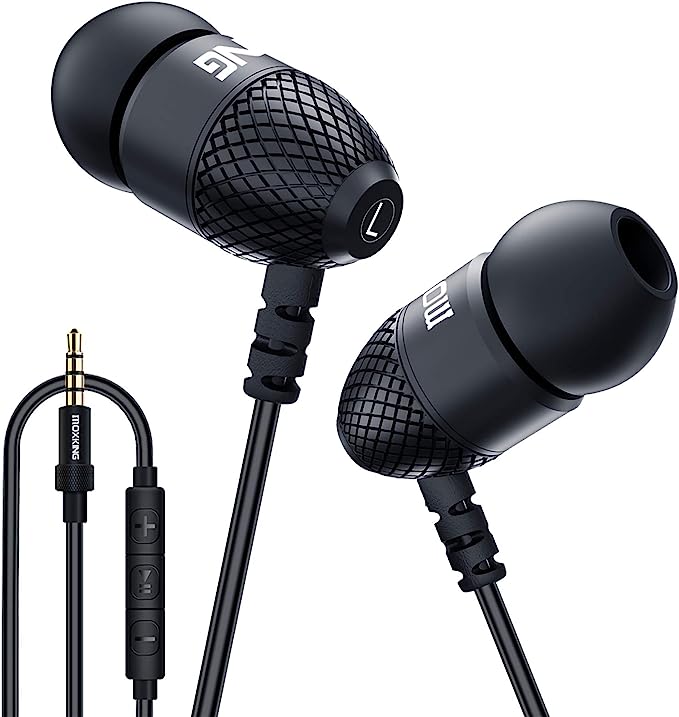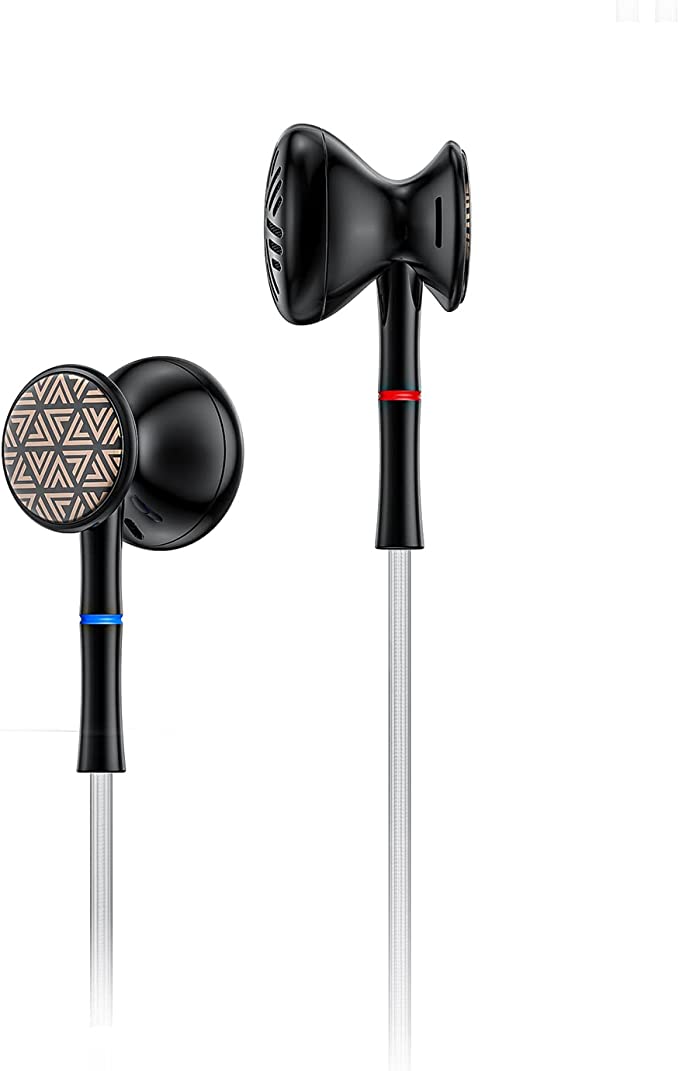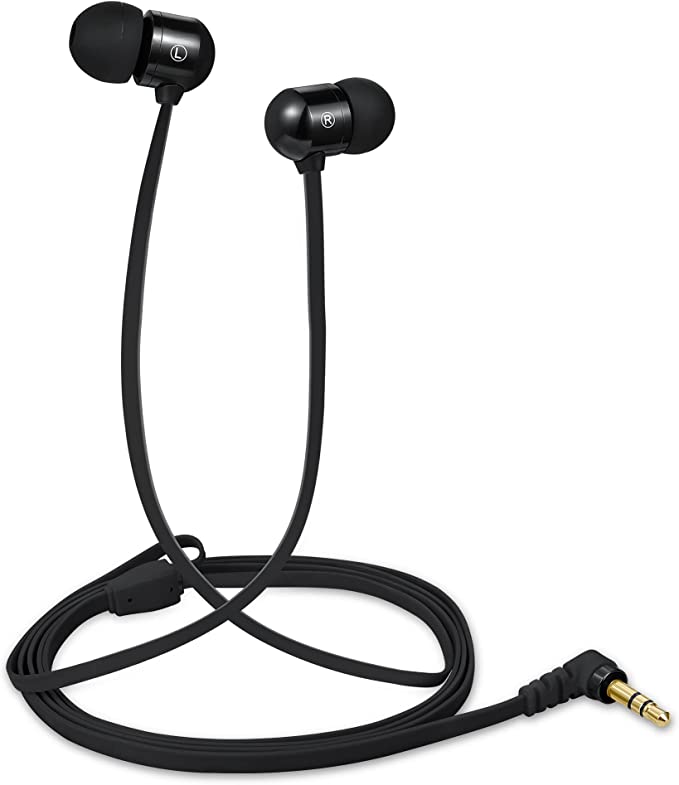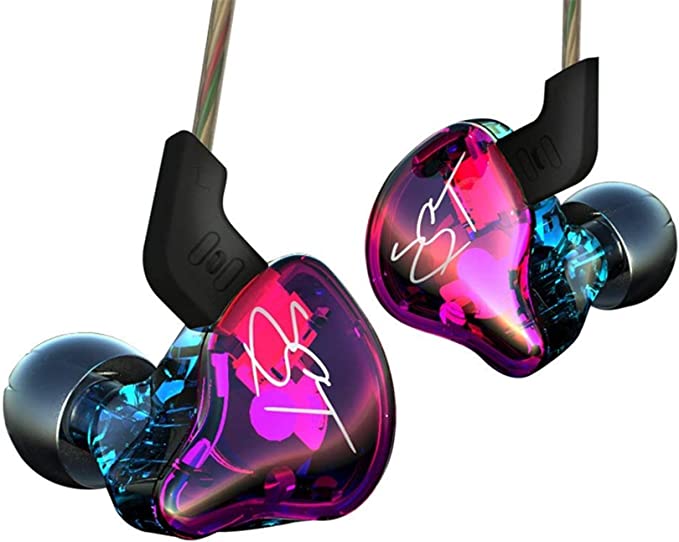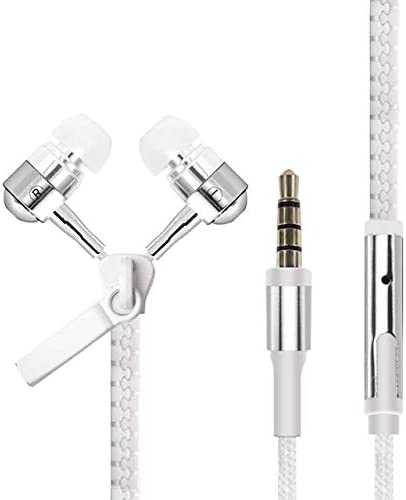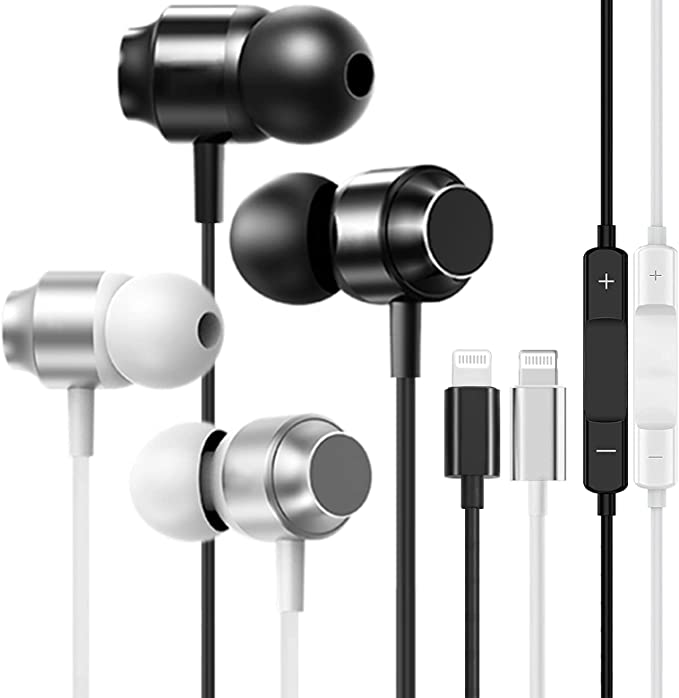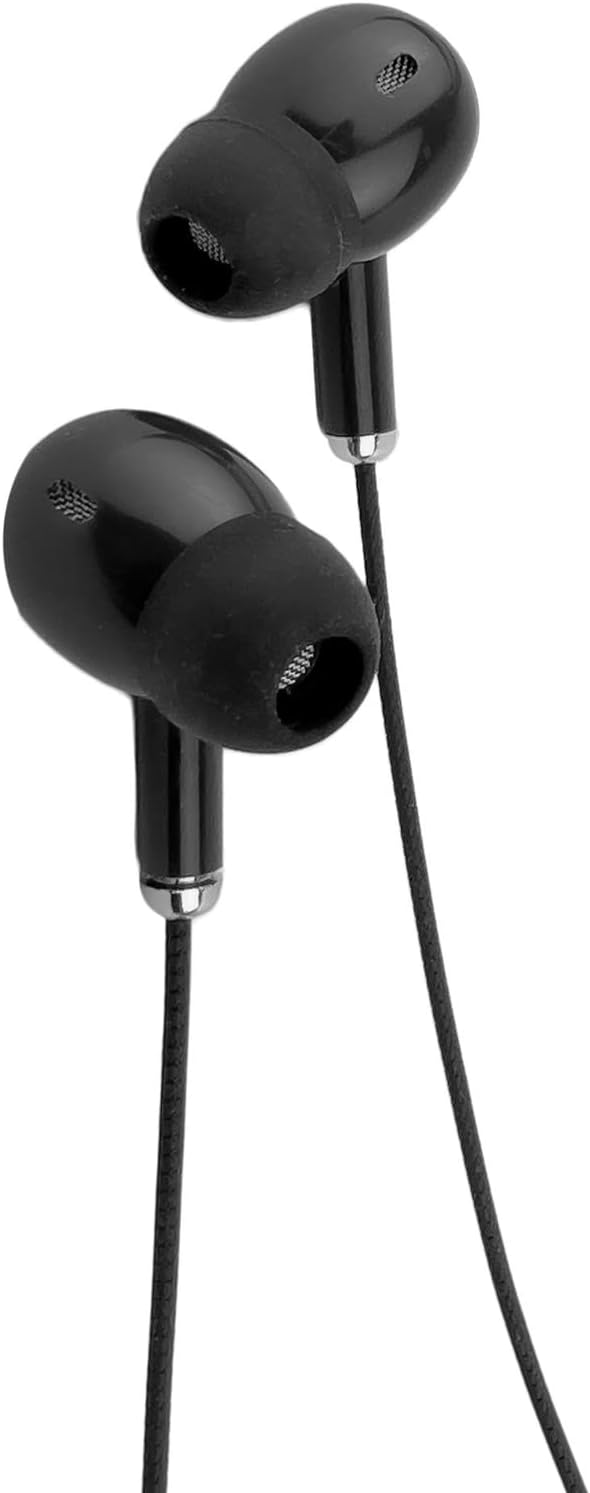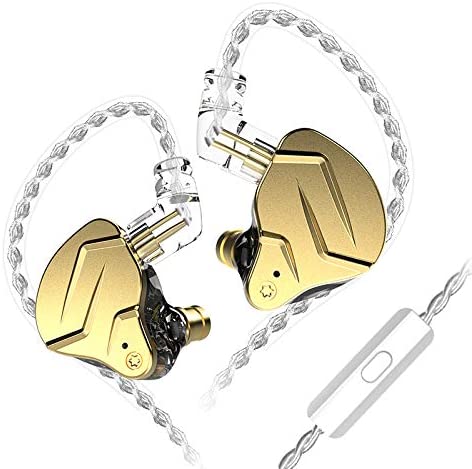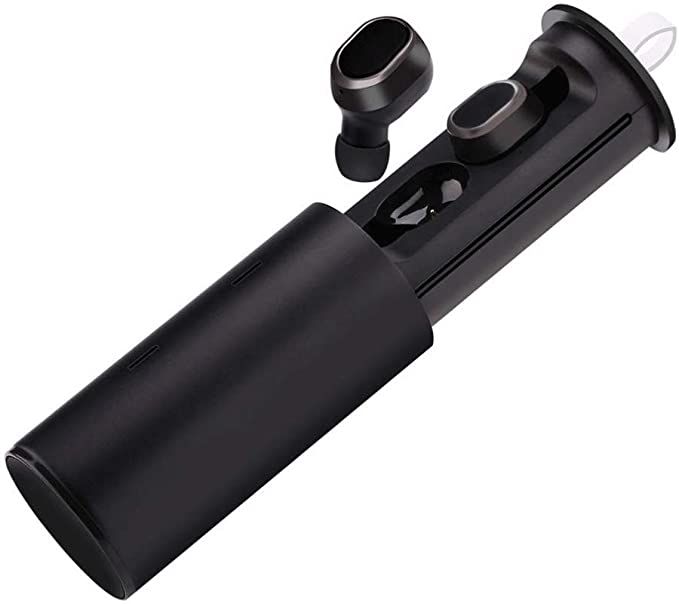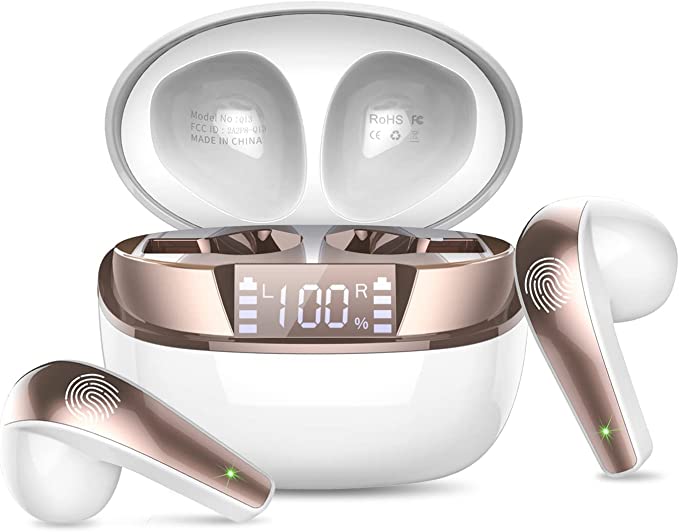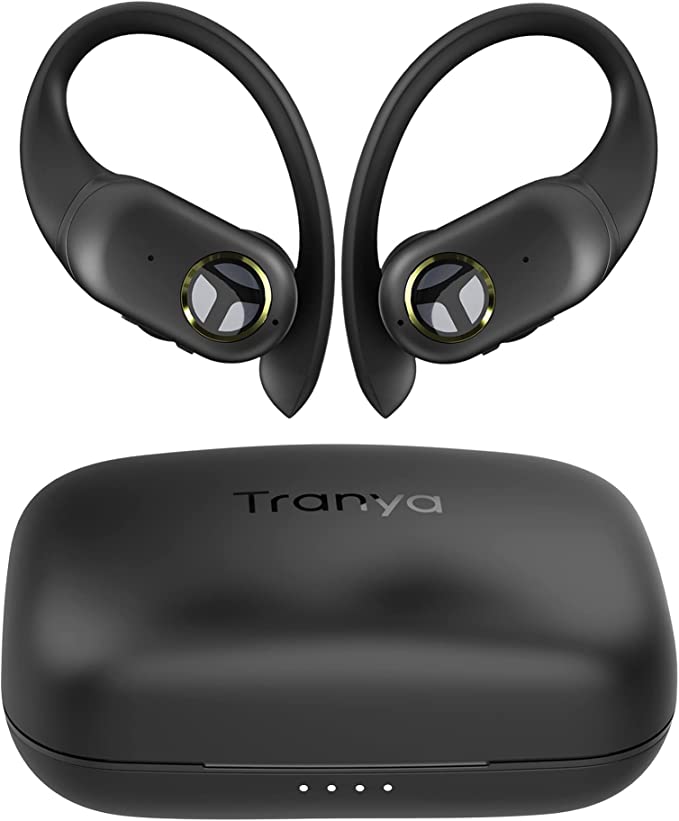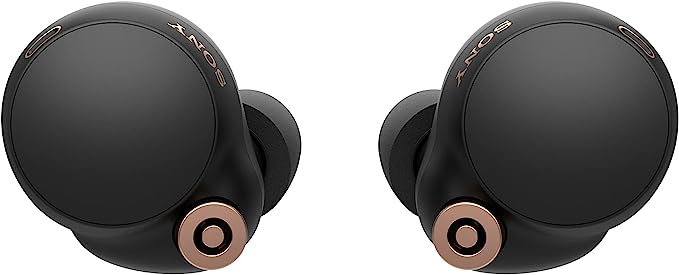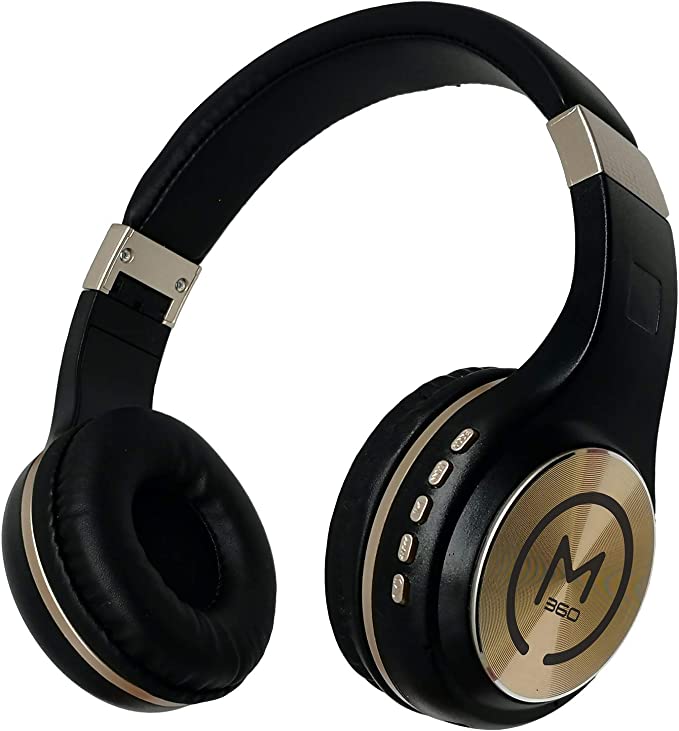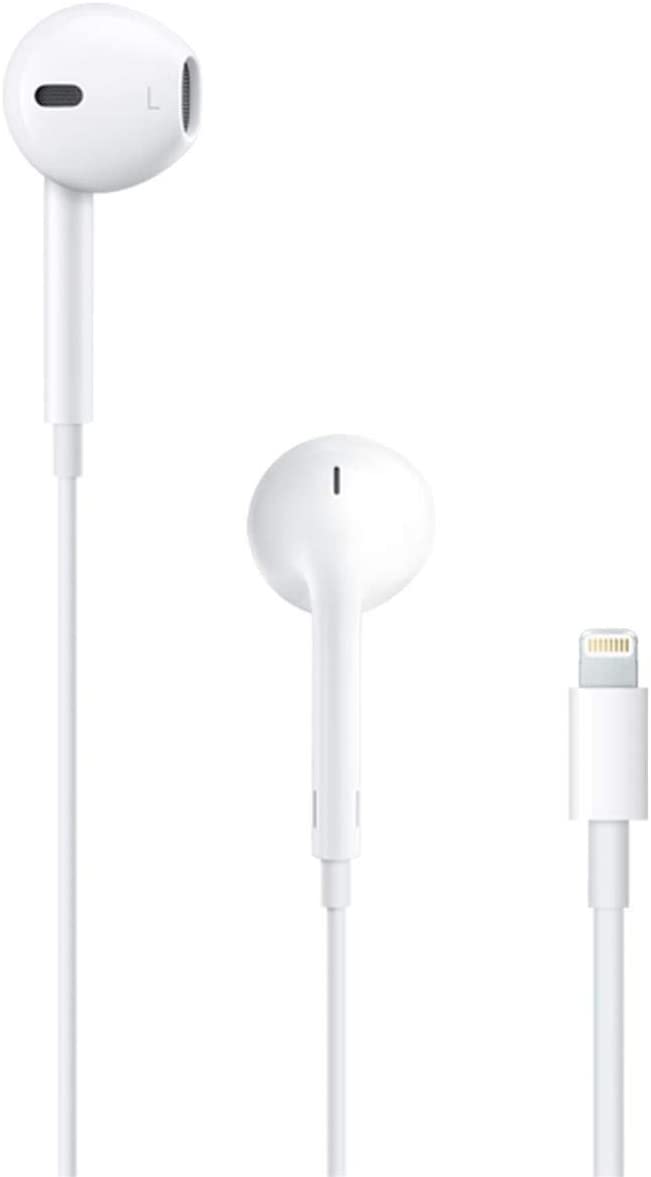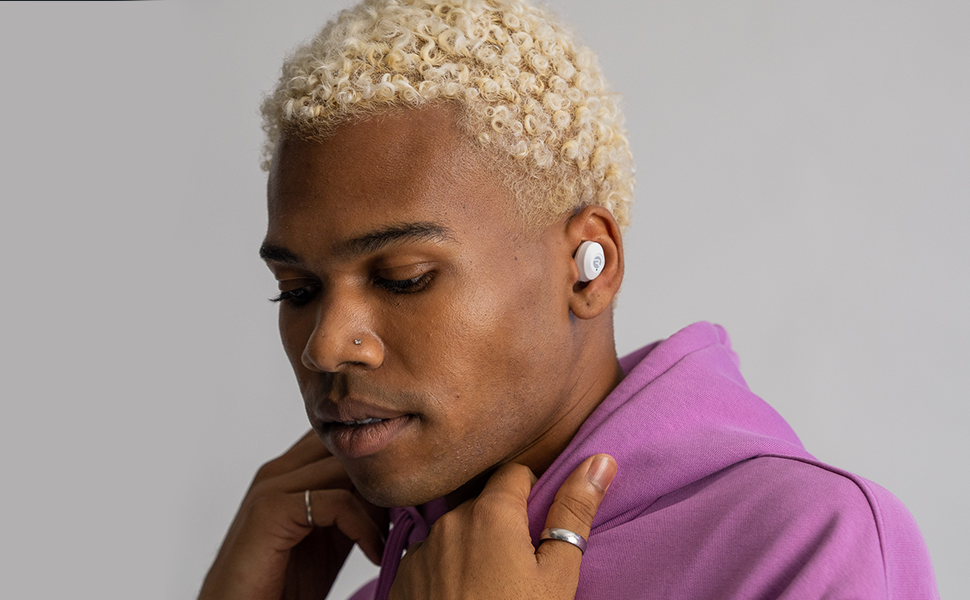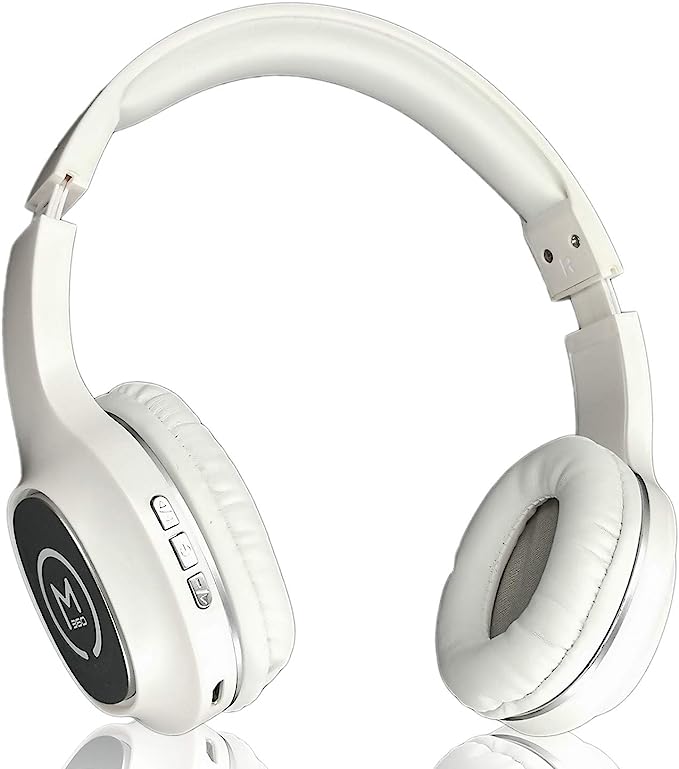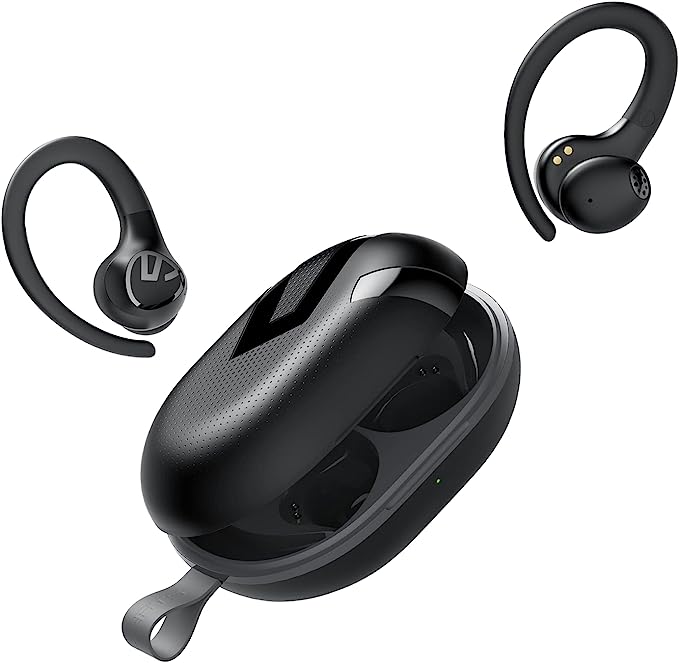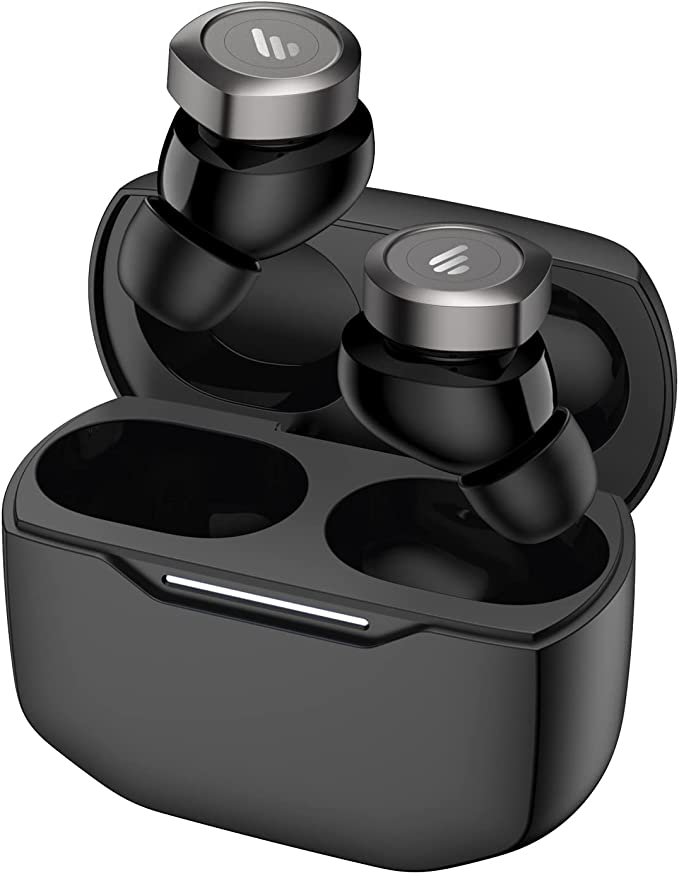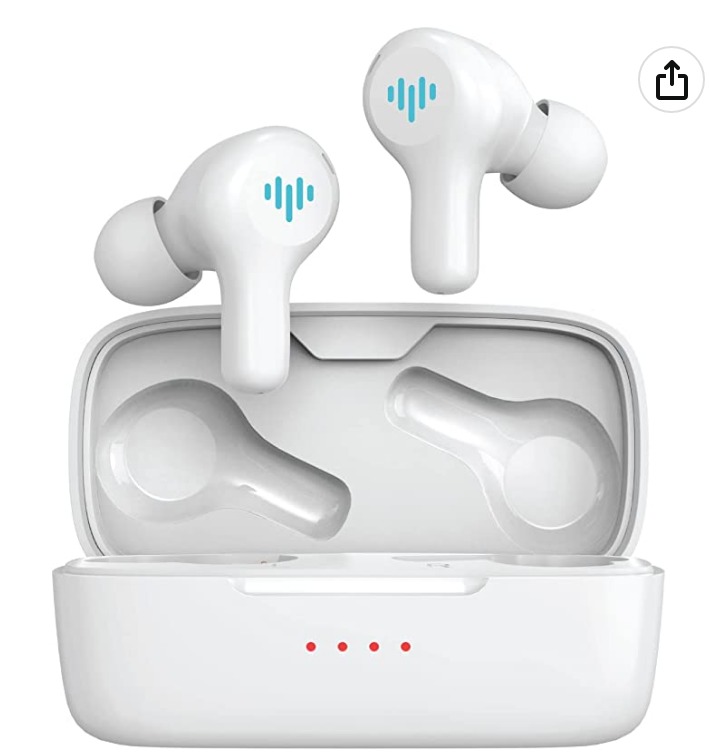QAWESDX XHB07V Wired Earphones: A Feature-packed yet Budget-friendly Option
Update on June 25, 2025, 2:54 p.m.
Ever pause your favorite track, pull out your earphones, and just marvel at these tiny conduits of sound? We often take them for granted, these everyday audio portals that whisk us away into worlds of music, podcasts, or keep us connected through calls. But nestled within even the most budget-friendly pair, like the QAWESDX XHB07V wired earphones, lies a fascinating symphony of scientific principles and clever engineering. Let’s peel back the curtain, not for a product review, but to explore the accessible audio science that makes these little marvels sing. Prepare to be surprised by the depth of thought packed into something so commonplace.

The Heartbeat of Your Audio: Decoding the Sound Drivers
At the very core of any earphone, the part responsible for transforming electrical signals into the sound waves that dance into your ears, is the driver. Think of it as a miniaturized orchestra, with each component playing a crucial role. The QAWESDX XHB07V, for instance, mentions employing “10mm Neodymium Magnet Dynamic Drivers.” Let’s break that down.
A dynamic driver, the most common type found in earphones and headphones, operates on a beautifully simple principle, much like a traditional loudspeaker shrunk down. It typically involves three key players: a diaphragm (a thin, flexible membrane), a voice coil (a coil of fine wire attached to the diaphragm), and a magnet. When an electrical audio signal flows through the voice coil, it creates a fluctuating magnetic field. This field interacts with the permanent magnet’s field, causing the voice coil – and thus the diaphragm attached to it – to rapidly vibrate back and forth. These vibrations push and pull the air, creating sound waves.
The “Neodymium” part is significant. Neodymium is a rare-earth metal that allows for the creation of incredibly strong magnets for their size. In earphones, a powerful magnet means the driver can be more efficient, responding quickly and accurately to the audio signal. This can translate to clearer sound and the ability to produce a wider range of frequencies with less power – a boon for portable devices. The term “Dome Type” often refers to the shape of the diaphragm, which can influence how sound waves are dispersed and contribute to the overall stiffness and responsiveness of the diaphragm itself.
Now, what about size? The XHB07V specs list “10.2mm*6.5mm dome type speaker driver units” and claim this is “1.77 times than the normal drive area.” While “normal” is subjective, the principle is that a larger diaphragm surface area can, generally speaking, move a larger volume of air. This is particularly important for reproducing low-frequency sounds – the bass that gives music its punch and depth. Think of a large bass drum versus a small snare drum; the larger surface of the bass drum is much better at creating those deep, resonant thuds because it can displace more air with each beat. This physical reality is a key reason why earphones that aim for “powerful deep bass (lowest 20Hz),” as these do, often highlight their driver dimensions.
To capture the full richness of music and sound, earphones aim to reproduce a wide range of frequencies. The QAWESDX XHB07V claims a frequency response of 20Hz to 20KHz. This range conveniently matches the generally accepted spectrum of human hearing – from the lowest perceptible rumble around 20 Hertz (Hz), like the deep throb of a sub-bass synth, to the highest, almost ethereal shimmer around 20,000 Hz (or 20 KiloHertz), such as the delicate harmonics of cymbals or a violin.
Finally, a quick glance at a few other technical terms you might encounter: Impedance, listed here as “48 Ω” (ohms), is essentially the electrical “resistance” the earphones present to your audio device. A moderate impedance like 48Ω is generally easy for most portable devices like smartphones and laptops to drive effectively. Sensitivity, “102dB” (decibels), tells us how loud the earphones will play for a given amount of input power. Higher sensitivity means they can get quite loud without needing a powerful amplifier. And Distortion, specified as “3% at 1kHz 1mW,” refers to any unwanted alteration of the original audio signal. Lower distortion figures are generally better, indicating a more faithful reproduction of the sound. While 3% isn’t audiophile-grade, for everyday listening at this price point, it signifies an effort to maintain a degree of clarity.

Your Personal Sound Bubble: The Science of Noise Isolation
Once sound is created, the next challenge is ensuring you hear it clearly, without the cacophony of the outside world intruding. This is where noise isolation comes into play. The QAWESDX XHB07V, like many in-ear earphones, relies on passive noise isolation. This isn’t some complex electronic trickery (that would be Active Noise Cancellation, or ANC); it’s pure physics.
Passive noise isolation works by creating a physical barrier that blocks or attenuates external sound waves before they reach your eardrum. The primary elements here are the in-ear design itself and, crucially, the silicone eartips. The manufacturer states the XHB07V’s ergonomic design is based on “scanned ear canal data,” resulting in a “6mm in-ear diameter,” aiming for a snug yet comfortable fit. When you insert an in-ear earphone with the correct sized eartip (the XHB07V provides S/M/L options), it forms a seal within your ear canal. This seal acts like a tiny, personal soundproofed room. High-frequency sounds, which travel in shorter waves, are particularly well blocked by this physical barrier.
This seal is also the secret behind the often-claimed bass boost – the XHB07V documentation mentions it can “increase bass up to 30%.” When the ear canal is sealed, the low-frequency sound waves produced by the driver are trapped and can’t easily escape. This contained acoustic energy leads to a more pronounced and impactful bass perception. It’s similar to how a subwoofer sounds much more powerful in a well-sealed room compared to an open space.
What about those “sound-absorbing holes” mentioned in the product description? Their exact function in such a small device can be multifaceted. They might be tiny acoustic vents designed to relieve air pressure that can build up behind the diaphragm or in the sealed ear canal, which can improve comfort during long listening sessions and sometimes affect bass response. In some more complex acoustic designs, such openings can act as miniature ports, akin to a bass reflex port on a loudspeaker, to tune the low-frequency response or manage internal resonances. Without detailed schematics, it’s hard to say definitively, but they are undoubtedly part of the earphone’s acoustic tuning.

“Can You Hear Me Now?”: The Miniature Marvel of the MEMS Microphone
In today’s world, earphones are not just for listening; they’re vital communication tools. The quality of the built-in microphone can make or break a call or a voice command. The QAWESDX XHB07V features a “MEMS acoustic noise reduction HD mic module.”
MEMS stands for Micro-Electro-Mechanical Systems. This technology represents a significant leap from older microphone designs. MEMS microphones are manufactured using semiconductor fabrication techniques, allowing them to be incredibly small, power-efficient, highly consistent in performance, and relatively immune to vibration and temperature changes. These characteristics make them ideal for integration into compact devices like earphones.
The “acoustic noise reduction” and “echo-cancel tech” aspects refer to signal processing that happens either within the microphone module itself or by the device it’s connected to. These systems are designed to distinguish your voice from ambient background noise. By analyzing the incoming sound, algorithms attempt to suppress steady noises (like an office hum or traffic rumble) and reduce echo, allowing your voice to come through more clearly to the person on the other end of the line. It’s a constant battle of signal versus noise, fought on a microscopic silicon battlefield.

The Material Story: Durability Meets Acoustic Design
The physical construction of an earphone also plays a role in its performance and longevity. The QAWESDX XHB07V boasts an “Aluminum alloy cavity” and “Metal housing.” Beyond the obvious benefit of enhanced durability compared to, say, basic plastic, the choice of metal can have acoustic implications.
Aluminum alloy is relatively lightweight but also quite rigid. A rigid housing is less prone to unwanted vibrations or resonances that can color the sound produced by the driver. If the housing itself vibrates sympathetically with certain frequencies, it can introduce distortion or make the sound muddy. A well-damped, rigid enclosure helps ensure that the sound you hear is primarily from the driver’s diaphragm, as intended. And, of course, a metal shell simply feels more premium and can withstand the rigors of being tossed in a bag or pocket more gracefully.
Connecting these tiny sound engines to your device is the venerable 3.5mm headphone jack. The XHB07V specifies a “Metal 3.5mm headphone jack” with “gold-plated plugs.” Gold is an excellent electrical conductor and, crucially, it’s highly resistant to corrosion and oxidation. Over time, other metals can tarnish, leading to poor electrical contact and a noisy or intermittent signal. Gold plating helps ensure a clean, reliable connection for longer. And while the quest for truly “tangle-free” cables is ongoing, any design that minimizes knots is a welcome practical touch for daily use.

The Conductor’s Baton: Interacting with Your Audio
Ease of use is paramount for any everyday gadget. The QAWESDX XHB07V includes an in-line remote control. This little hub on the cable typically allows you to play or pause your music, skip tracks, answer or end calls, and adjust the volume without having to reach for your phone or computer. It’s a simple feature that adds a significant layer of convenience, especially when you’re on the move.
And the 3.5mm jack itself? Despite the rise of wireless audio, it remains a symbol of universal compatibility. Its straightforward analog nature means you can plug these earphones into a vast array of devices – from older smartphones and tablets to laptops, desktop computers, gaming consoles like the PS4, and dedicated MP3 players. It’s a testament to a design that simply works.

Conclusion: The Accessible Symphony of Science in Your Ears
As we’ve seen, even a pair of earphones as modestly priced as the QAWESDX XHB07V is a confluence of thoughtful engineering and applied scientific principles. From the electro-acoustic dance within the dynamic drivers and the physics of passive noise isolation that carve out your personal sound space, to the material science ensuring durability and the micro-machining magic of MEMS microphones, there’s a surprising amount of technology at play.

Understanding a little about this “symphony in your pocket” doesn’t just demystify your gadgets; it can also enhance your appreciation for the music and sounds they deliver. It empowers you to be a more informed listener, recognizing that good design and intelligent application of science are not solely the domain of high-end, expensive equipment. The next time you pop in your earphones, take a moment. Listen a little closer. You’re not just hearing music; you’re experiencing a tiny, accessible marvel of science.
